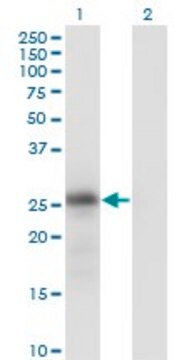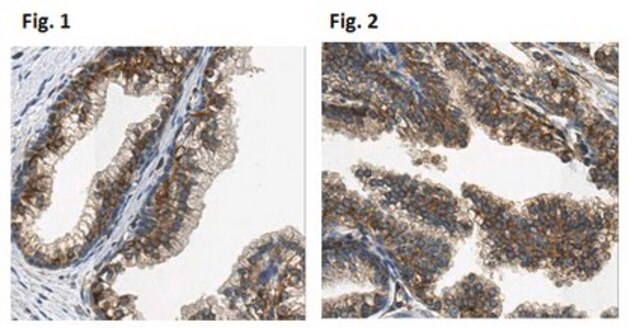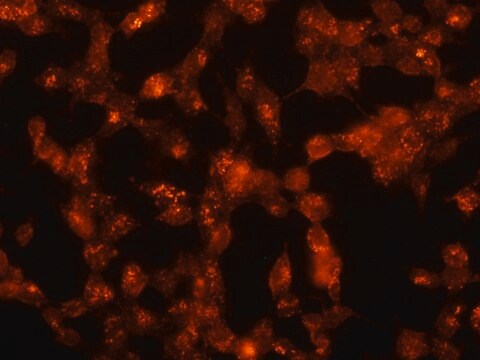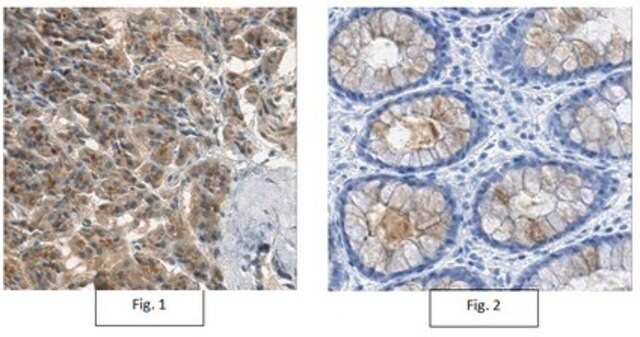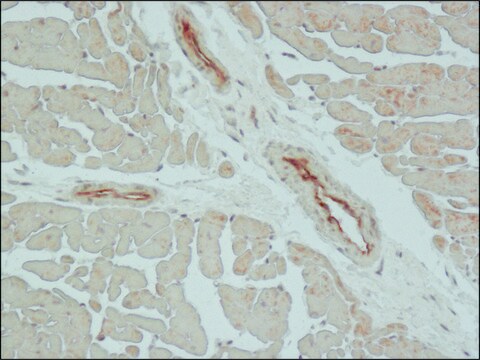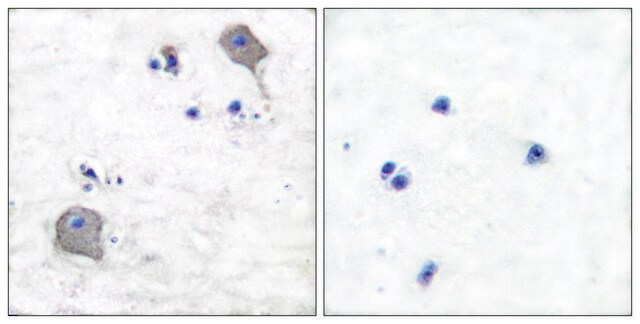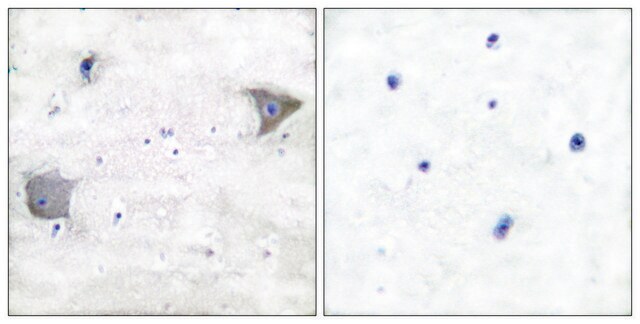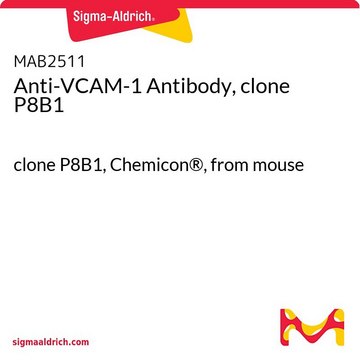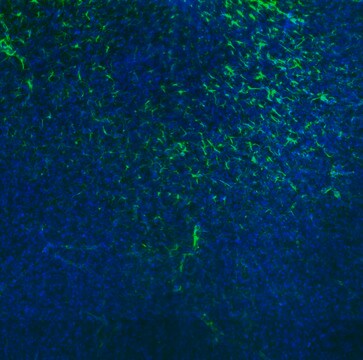MABN873
Anti-Kallikrein 6/KLK6 Antibody, clone E24
clone E24, from mouse
Synonyme(s) :
Kallikrein-6, hK6, Neurosin, Protease M, Serine protease 18, Serine protease 9, SP59, Zyme
About This Item
Produits recommandés
Source biologique
mouse
Niveau de qualité
Forme d'anticorps
purified antibody
Type de produit anticorps
primary antibodies
Clone
E24, monoclonal
Espèces réactives
mouse, human
Technique(s)
ELISA: suitable
affinity chromatography: suitable
immunohistochemistry: suitable (paraffin)
Isotype
IgG1κ
Numéro d'accès NCBI
Numéro d'accès UniProt
Conditions d'expédition
wet ice
Modification post-traductionnelle de la cible
unmodified
Informations sur le gène
human ... KLK6(5653)
Description générale
Spécificité
Immunogène
Application
ELISA Analysis: Representative lots were conjugated with biotin and used as the detection antibody for analyzing kallikrein-6 levels in ovarian cytosolic extracts as well as ascites fluids from ovarian cancer patients (Shan, S.J., et al. (2007). Br. J. Cancer. 96(2):362-372; Luo, L.Y., et al. (2006). Tumor Biol. 27:227-234).
Activity/Function Inhibition Analysis: Representative lots inhibited the catalytic activity of purified human kallikrein-6 (hK6) from ascites fluid as well as recombinant hK6 in cell-free enzymatic assays (Sotiropoulou, G., et al. (2012). Chem. Cent. J. 6(1):148; Luo, L.Y., et al. (2006). Tumor Biol. 27:227-234; Ghosh, M.C., et al. Tumor Biol. (2004). 25(4):193-199).
Immunoaffinity Purification: Representative lots were conjugated to resins and employed for affinity purification of kallikrein-6 from human ascites fluid, cerebrospinal fluid (CSF), and breast milk (Luo, L.Y., et al. (2006). Tumor Biol. 27:227-234; Hutchinson, S., et al. (2003). Clin. Chem. 49(5):746-751).
Neuroscience
Neurodegenerative Diseases
Qualité
Immunohistochemistry Analysis: A 1:50 dilution of this antibody detected Kallikrein 6/KLK6 in human cerebral cortex tissue.
Description de la cible
Forme physique
Stockage et stabilité
Autres remarques
Clause de non-responsabilité
Vous ne trouvez pas le bon produit ?
Essayez notre Outil de sélection de produits.
Code de la classe de stockage
12 - Non Combustible Liquids
Classe de danger pour l'eau (WGK)
nwg
Point d'éclair (°F)
Not applicable
Point d'éclair (°C)
Not applicable
Certificats d'analyse (COA)
Recherchez un Certificats d'analyse (COA) en saisissant le numéro de lot du produit. Les numéros de lot figurent sur l'étiquette du produit après les mots "Lot" ou "Batch".
Déjà en possession de ce produit ?
Retrouvez la documentation relative aux produits que vous avez récemment achetés dans la Bibliothèque de documents.
Notre équipe de scientifiques dispose d'une expérience dans tous les secteurs de la recherche, notamment en sciences de la vie, science des matériaux, synthèse chimique, chromatographie, analyse et dans de nombreux autres domaines..
Contacter notre Service technique